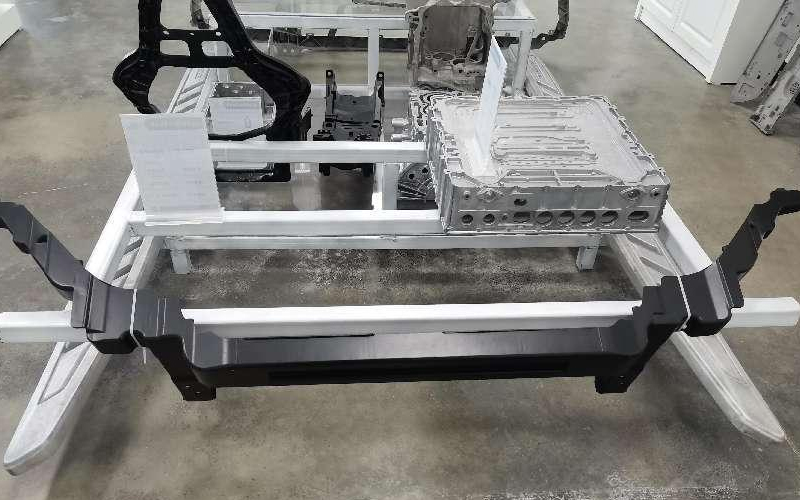Die casting is a manufacturing process used to produce metal parts by forcing molten metal into a mold cavity under high pressure. It is commonly used for the production of complex and intricate parts with high accuracy and surface finish. To ensure successful die casting manufacturing, it is crucial to follow certain design guidelines. In this article, we will discuss some essential tips for die casting design.
1. Part Design Considerations:
When designing a part for die casting, it is important to consider certain factors to optimize the manufacturing process. First, the part should have uniform wall thickness to ensure proper flow of molten metal and avoid defects like porosity. Sharp corners and edges should be avoided as they can result in stress concentration and increase the likelihood of cracks. Additionally, the part should have proper draft angles to facilitate easy ejection from the mold.
2. Gate Design:
The gate is the channel through which molten metal enters the mold cavity. It is essential to design the gate properly for successful die casting. The gate should be placed in a location that allows for even flow of metal throughout the cavity. It should also be designed with an appropriate size to prevent premature solidification of the metal. A well-designed gate ensures uniform filling of the mold and minimizes the formation of defects like cold shuts.
3. Wall Thickness:
Maintaining a consistent wall thickness is critical for die casting. Varying wall thickness can lead to uneven cooling and result in defects like warpage and porosity. It is recommended to keep the wall thickness between 2 to 5 mm for aluminum parts and 3 to 7 mm for zinc parts. Thicker sections should be properly reinforced to prevent distortion during solidification.
4. Ribs and Bosses:
Ribs are used to provide additional strength and rigidity to the part, while bosses are used for mounting or joining purposes. When designing ribs and bosses, it is important to maintain a proper thickness to avoid shrinkage and sink marks. Ribs should have a thickness of 60 to 70% of the adjacent wall thickness, and bosses should be designed with a thickness of at least 60% of the wall thickness.
5. Fillets and Radii:
Sharp corners and edges should be avoided in die casting design. Instead, fillets and radii should be incorporated to distribute stress evenly and reduce the risk of cracks. The minimum fillet radius should be 1 mm for aluminum parts and 1.5 mm for zinc parts. Large fillet radii should be used at the intersection of walls to prevent stress concentration.
6. Draft Angles:
Draft angles are essential for easy ejection of the part from the mold. The recommended draft angle for die casting is 1 to 3 degrees per side, depending on the part geometry and material. Insufficient draft can result in sticking of the part in the mold, while excessive draft can cause flash and dimensional inaccuracies.

7. Surface Finish:
Die casting can produce parts with excellent surface finish. However, it is important to consider the surface finish requirements during the design phase. If a specific surface finish is required, additional machining or polishing operations may be needed. It is also important to avoid texture or patterns in areas where metal flow is critical to prevent defects like flow lines.
In conclusion, successful die casting manufacturing relies on proper design considerations. By following the guidelines mentioned above, designers can optimize the die casting process and ensure the production of high-quality parts. Consistent wall thickness, proper gate design, and the use of fillets and radii are some of the key factors to focus on. By paying attention to these essential tips, manufacturers can achieve efficient and cost-effective die casting operations.
-

- Hochpräzises Druckguss-Lenkrad für die Automobilindustrie
-

- Maßgeschneiderte Thixomolding-Teile UAV-Komponenten mit CNC-Bearbeitung und Oberflächenbehandlung
-

- Maßgeschneiderte Metallteile für das Macbook-Mittelbrett hergestellt
-

- 2022 Großhandel Heißer Verkauf Fahrradteile Magnesiumlegierung Kinder Fahrrad Kein Pedal Balance Fahrrad Kinder Mehrere Farben erhältlich
-

- Magnesium-Thixomolding-Teile Laptop-Gehäusedeckel B
-

- UAV-Teile aus Thixomolding-Druckguss aus Magnesiumlegierung C

 0086-750-5616188
0086-750-5616188 +86 13392089688
+86 13392089688 sales@zhongmei-tech.com
sales@zhongmei-tech.com







